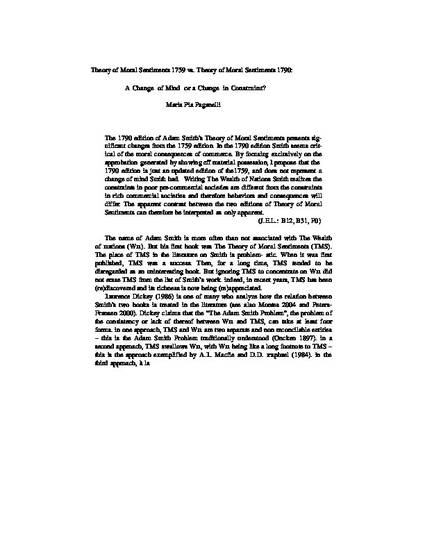
Article
Theory of Moral Sentiments 1759 vs Theory of Moral Sentiments 1790: a change of mind or a change of constraints?
Studi e Note di Economia
Document Type
Post-Print
Publication Date
2-1-2011
Disciplines
Abstract
The 1790 edition of Adam Smith’s Theory of Moral Sentiments presents significant changes from the 1759 edition. In the 1790 edition Smith seems critical of the moral consequences of commerce. By focusing exclusively on the approbation generated by showing of material possession, I propose that the 1790 edition is just an updated edition of the 1759, and does not represent a change of mind Smith had. Writing The Wealth of Nations Smith realizes the constraints in poor pre-commercial societies are diferent from the constraints in rich commercial societies and therefore behaviors and consequences will differ. The apparent contrast between the two editions of Theory of Moral Sentiments can therefore be interpreted as only apparent.
Citation Information
Paganelli, M. P. (2011). Theory of Moral Sentiments 1759 vs Theory of Moral Sentiments 1790: a change of mind or a change of constraints? Studi e Note di Economia, XVI.2: 123-132.
